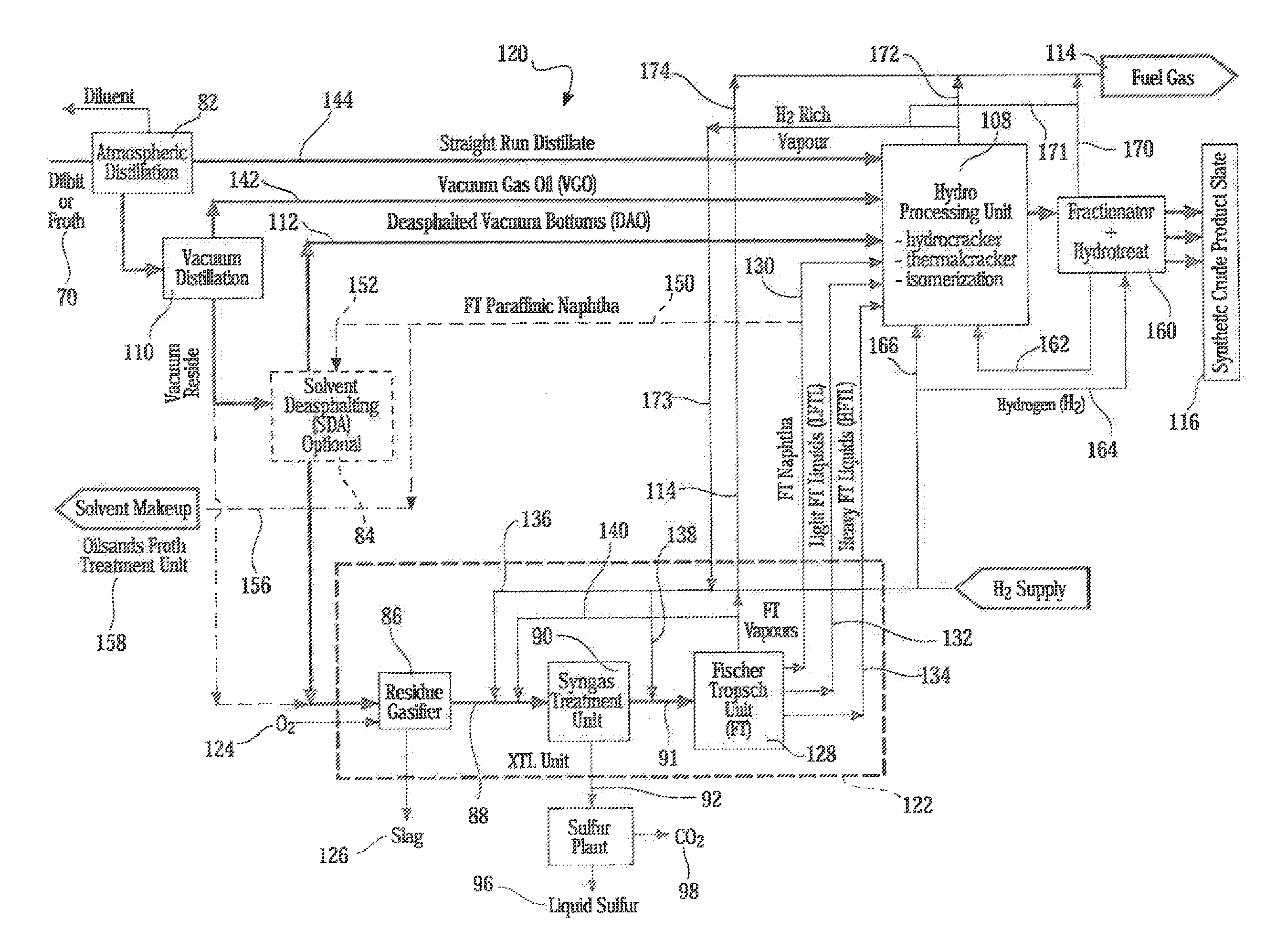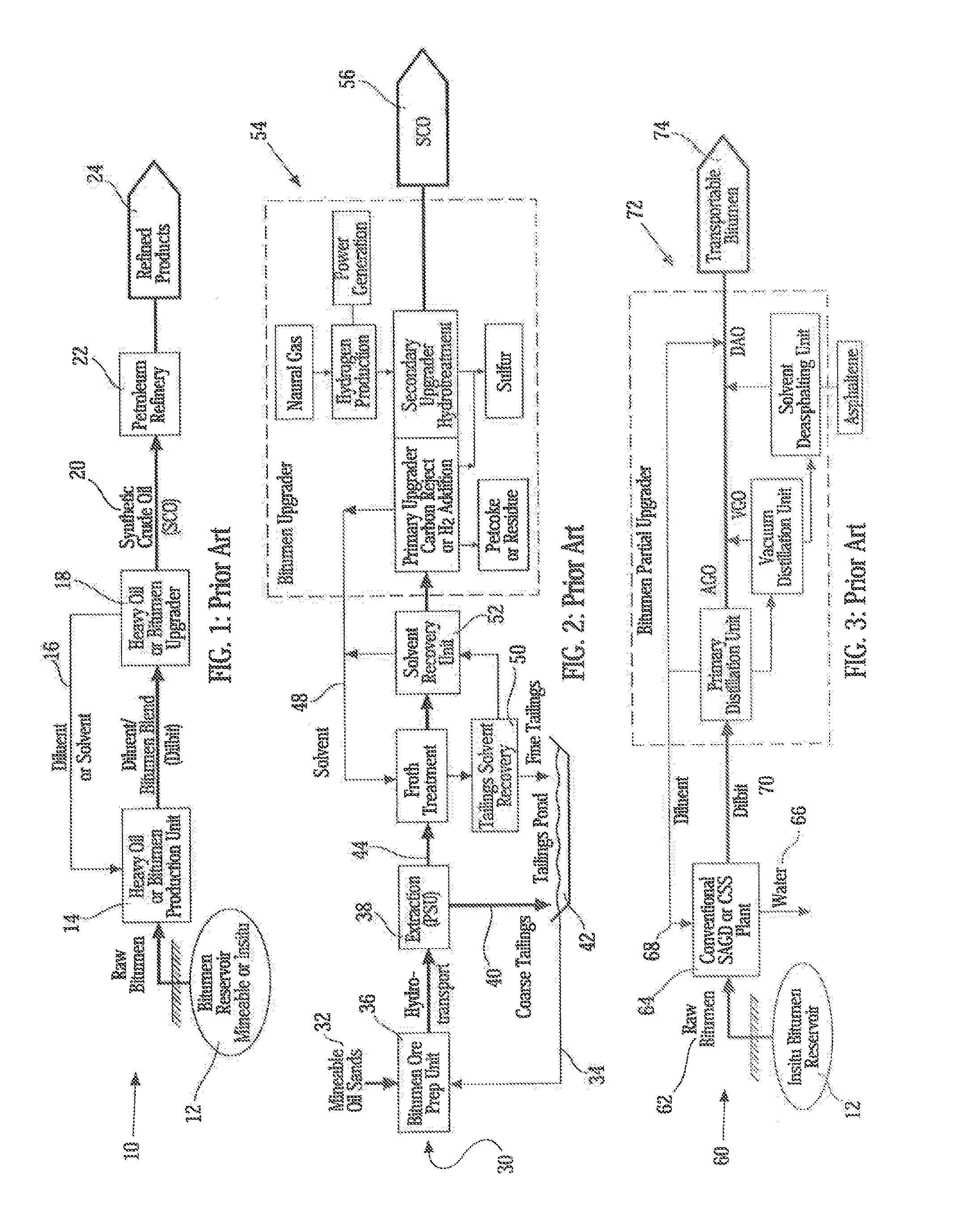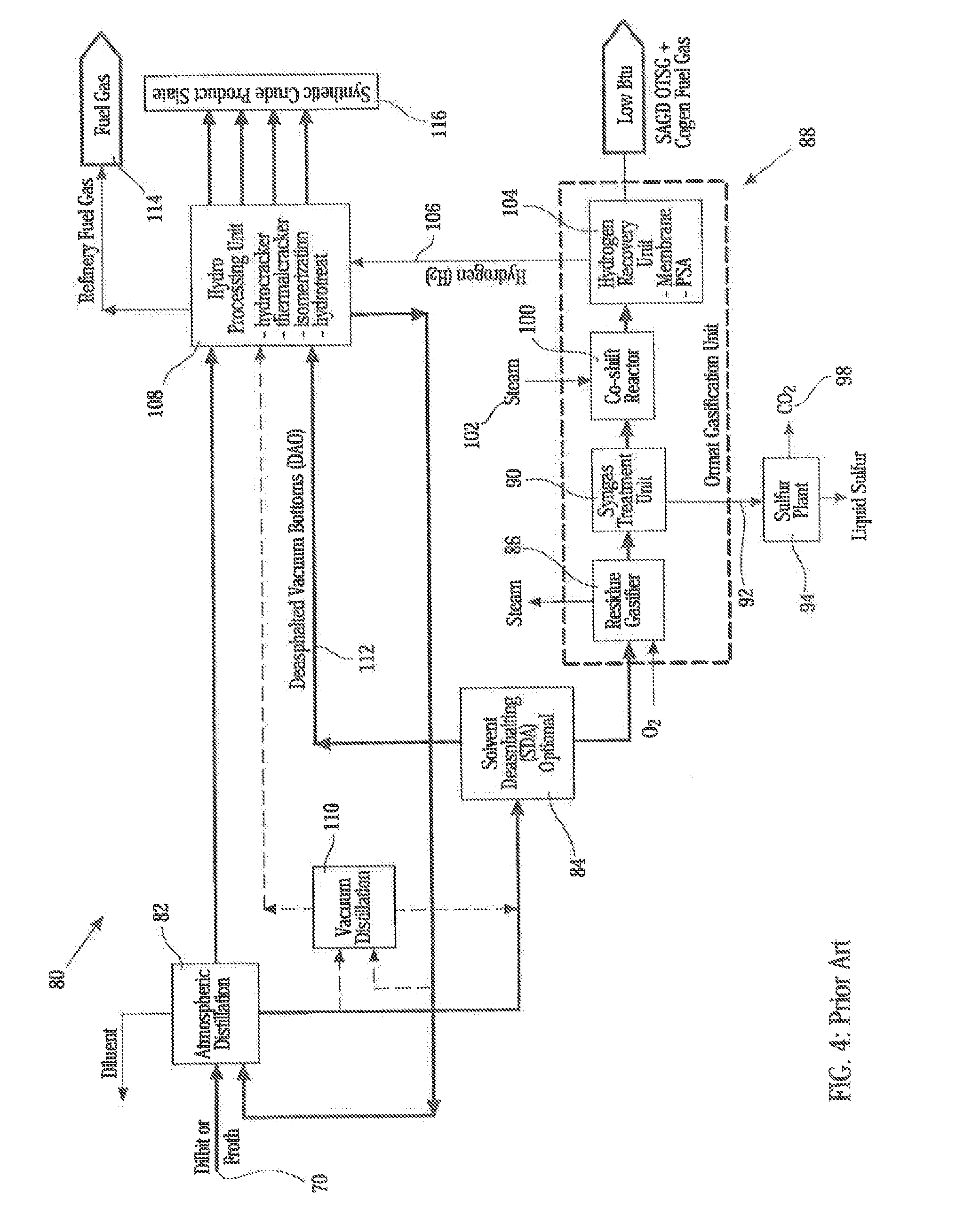Process for co-producing commercially valuable products from byproducts of heavy oil and bitumen upgrading process
- Summary
- Abstract
- Description
- Claims
- Application Information
AI Technical Summary
Benefits of technology
Problems solved by technology
Method used
Image
Examples
example 1
[0107]This example describes the design basis of a co-production Methanol Plant 302, whereby a portion of about 356 MMSCFD of stream 190c is removed from the Fischer-Tropsch synthesis feed and directed as the base feed to unit 302. It is further combined with about 656 TPD CO2 from by-product stream 98a and about 40.6 MMSCFD H2 from stream 164, the result would be the optimum feed for co-production of 5,000 TPD or 1,800,000 TPY of Methanol by-product. This is the current world scale commercial methanol plant.[0108]a) Partial Stream 190c 356 MMSCFD or 39,035 moles / hr syngas with H2:CO=2.0[0109]b) Partial Stream 98a 656 TPD CO2 or 1370 moles / hr CO2 [0110]c) Partial Stream 164 40.6 MMSCFD H2 or 4452 moles / hr H2 [0111]d) The total syngas to Unit 302 44,856 moles / hr, or 67.94% H2, 29.06% CO, 3.0% CO2 [0112]e) Therefore, optimum syngas to Unit 302=(67.94-3.0) / 29.06+3.0)=2.03[0113]f) Total stream of 13,011 moles / hr CO+1,370 moles / hr CO2+30,475 moles / hr H2 results in 14,381 moles / hr CH3OH o...
example 2
[0114]This example describes a design basis of a co-production Ammonia Plant 310, whereby the Air Separation Unit produces 2100 TPD of high purity oxygen 124 for the upgrader use. The subsequent by-product of nitrogen results in 8,300 TPD N2 as stream 308. A portion of about 306 MMSCFD H2 from stream 164 is combined with 4,194 TPD N2, the result would be the optimum feed for the co-production of 5,000 TPD or 1,800,000 TPY of Ammonia by-product. This is the current world scale commercial ammonia plant.[0115]a) Partial Stream 308 consisting of 4,194 TPD N2 or 11,333 moles / hr[0116]b) Partial Stream 164 consisting of 306 MMSCFD H2 or 33,553 moles / hr H2 [0117]c) The total feed stream to Unit 310 of 44,886 moles / hr, or 25.2% N2 and 74.8% H2 [0118]d) 11,333 moles / hr N2+33,553 moles / hr H2 results in 22,666 moles / hr NH3 or about 453,320 lb / hr=5,000 TPD or 1,800,000 TPY ammonia
example 3
[0119]This example describes a design basis for a co-production Urea Plant 314, whereby a portion of the ammonia production 312 and additional by-product CO2 from the upgrader / refinery (98 a, b or c) is combined to produce urea fertilizer.[0120]a) Partial Stream 312 consisting of 4,202 TPD NH3 or 19,048 moles / hr[0121]b) Remaining portion of Stream 98a consisting of 544 TPD CO2 and Partial Stream 98c consisting of 4017 TPD CO2 for total of 4,561 TPD CO2 or 9,524 moles / hr CO2 [0122]c) The total feed stream to Unit 314 of 28,572 moles / hr, or 66.7% NH3 and 33.3% CO2 [0123]d) 19,048 moles / hr NH3+9,524 moles / hr CO2 results in 9,524 moles / hr NH2CONH2 or about 628,584 lb / hr=6,800 TPD or 2,400,000 TPY urea
[0124]The examples described above illustrate how the integration of the co-product units can recover a significant portion of the upgrader / refinery GHG CO2 emissions and co-produce 5,000 TPD Methanol and 5,000 TPD Ammonia or 6,800 TPD of Urea, and result in a “Near Zero GHG Emissions World...
PUM
| Property | Measurement | Unit |
|---|---|---|
| Pressure | aaaaa | aaaaa |
| Fraction | aaaaa | aaaaa |
Abstract
Description
Claims
Application Information
 Login to View More
Login to View More - R&D
- Intellectual Property
- Life Sciences
- Materials
- Tech Scout
- Unparalleled Data Quality
- Higher Quality Content
- 60% Fewer Hallucinations
Browse by: Latest US Patents, China's latest patents, Technical Efficacy Thesaurus, Application Domain, Technology Topic, Popular Technical Reports.
© 2025 PatSnap. All rights reserved.Legal|Privacy policy|Modern Slavery Act Transparency Statement|Sitemap|About US| Contact US: help@patsnap.com



